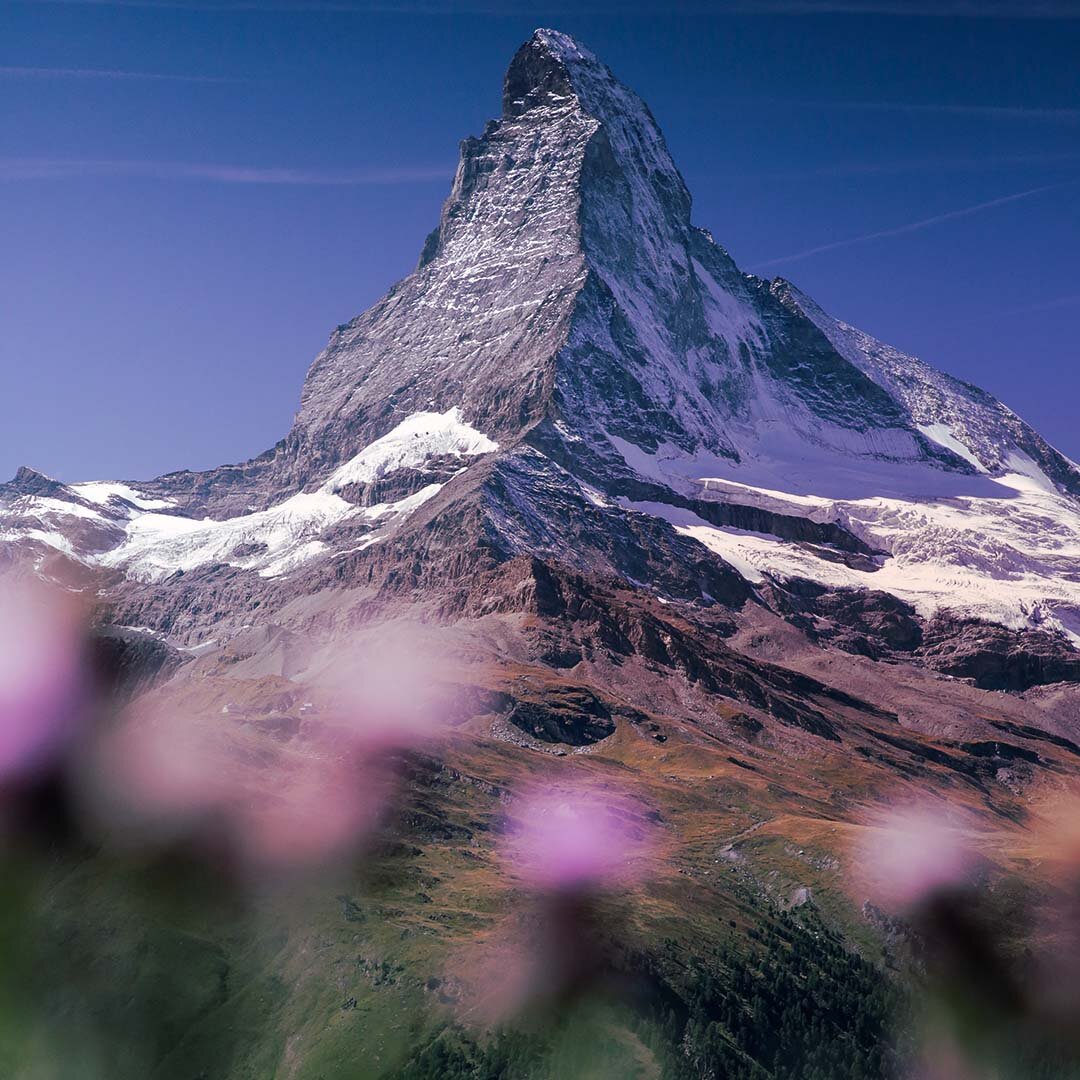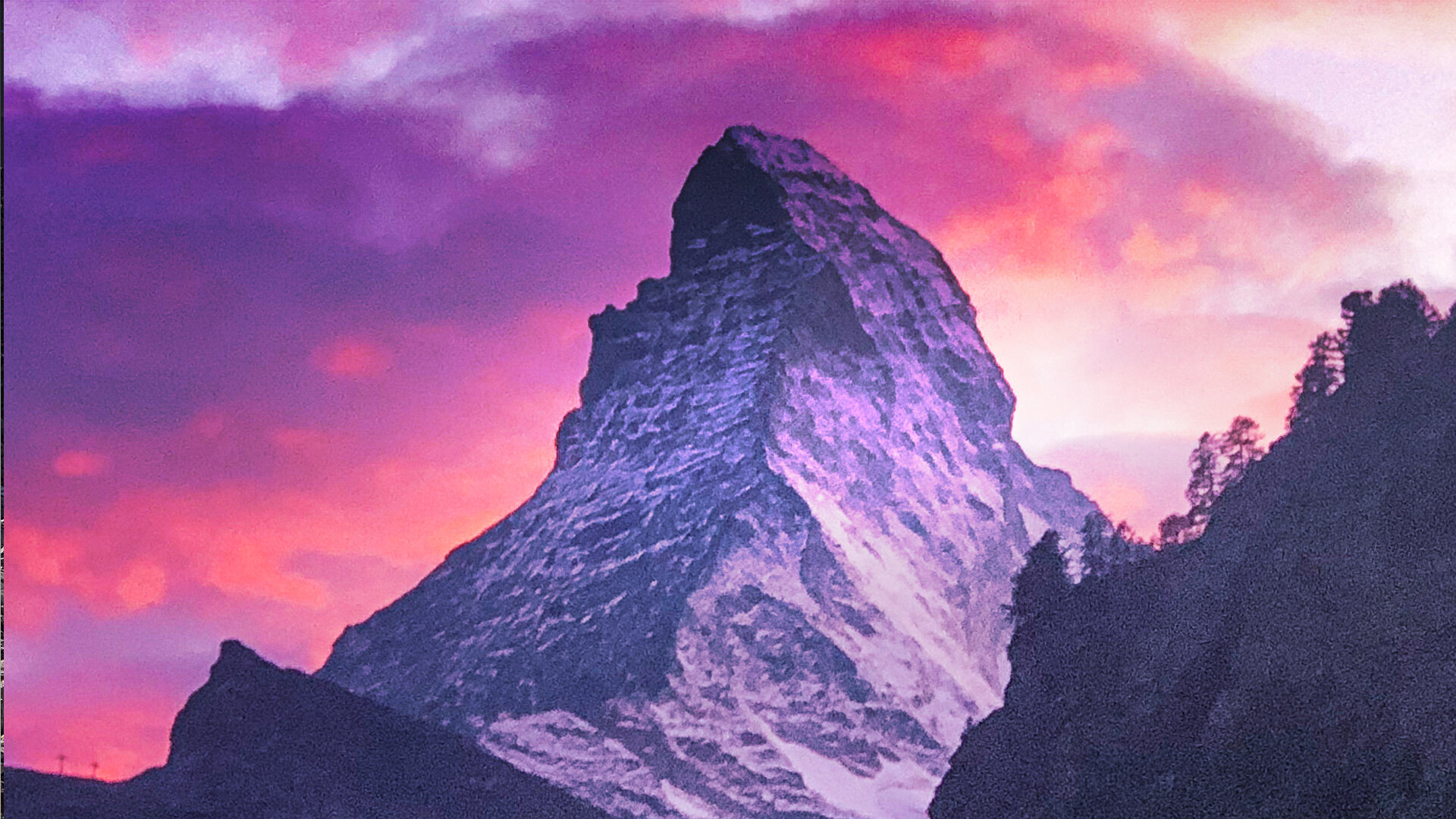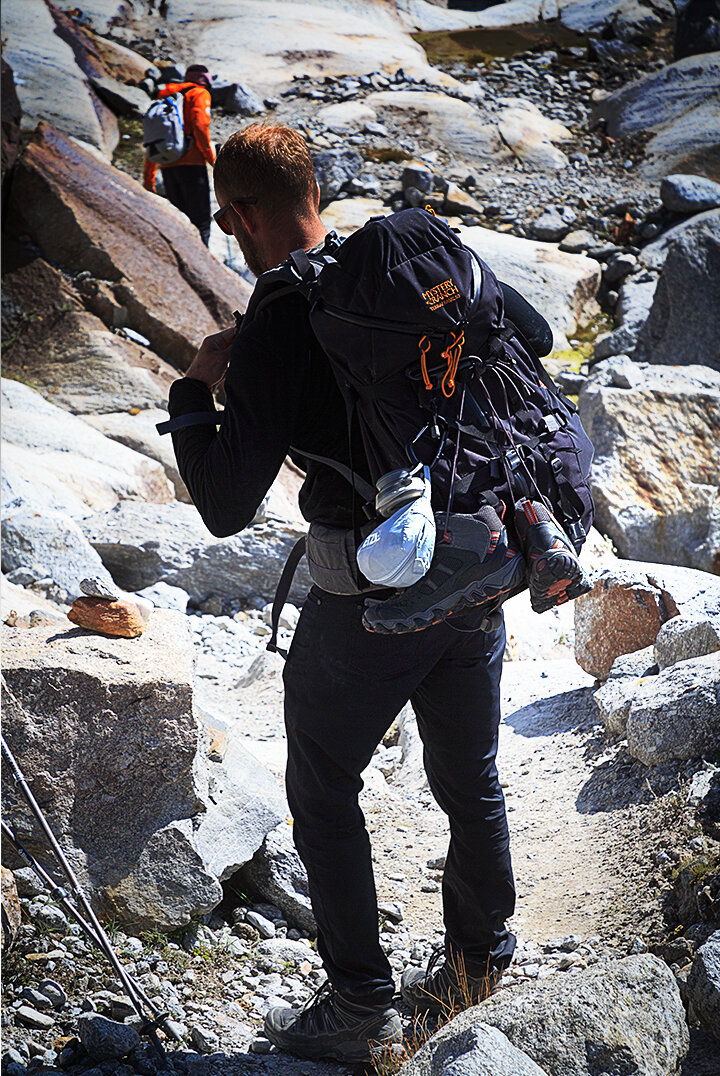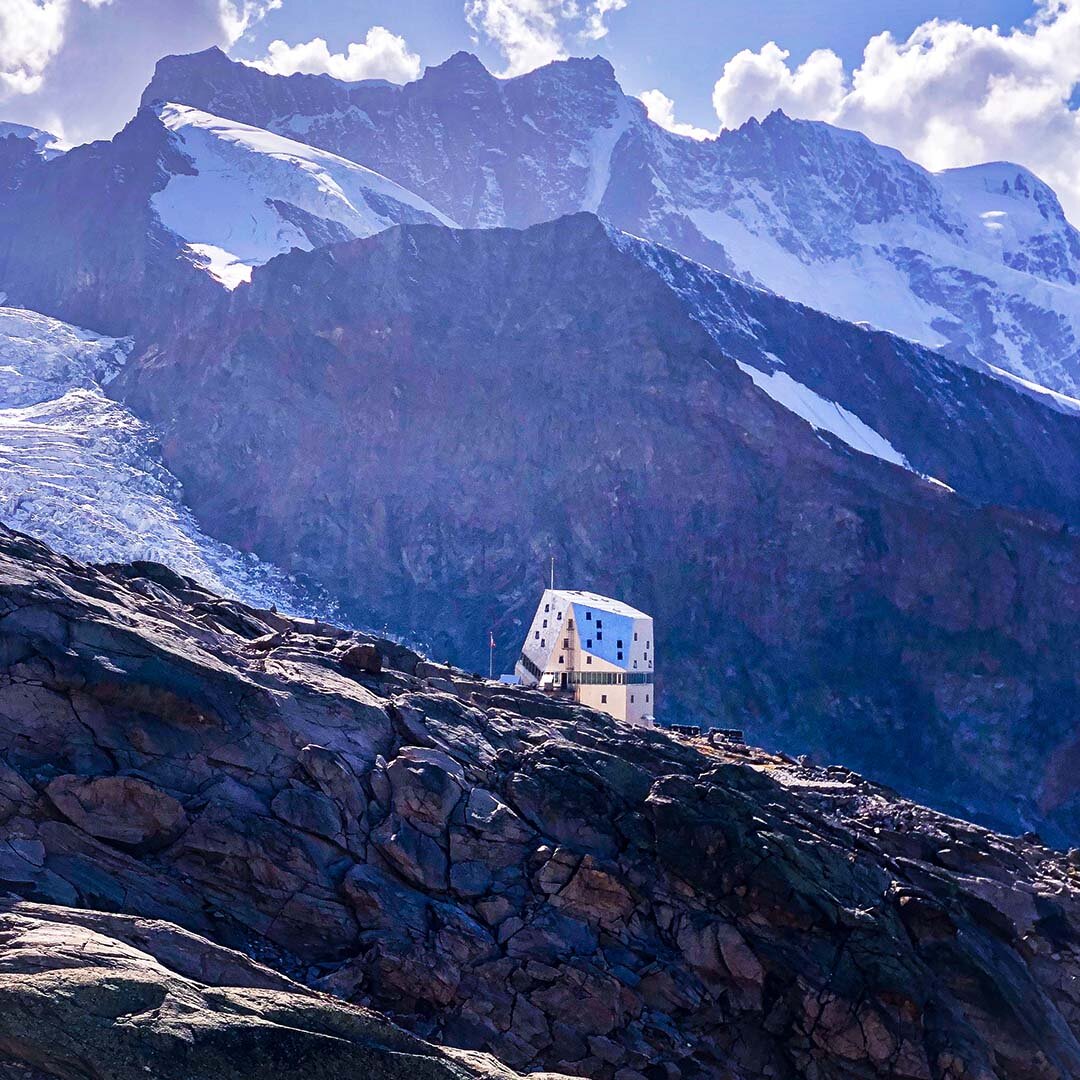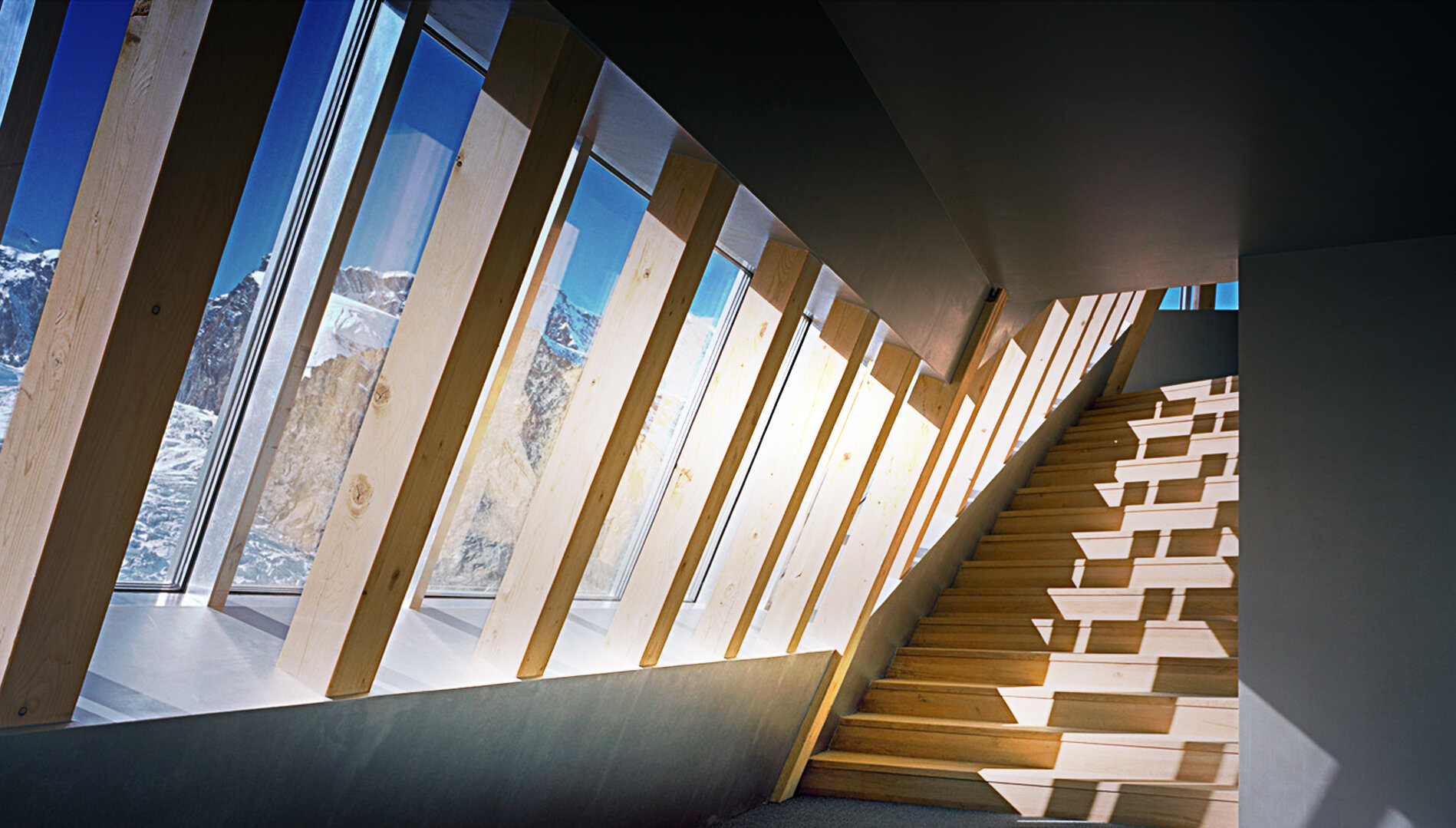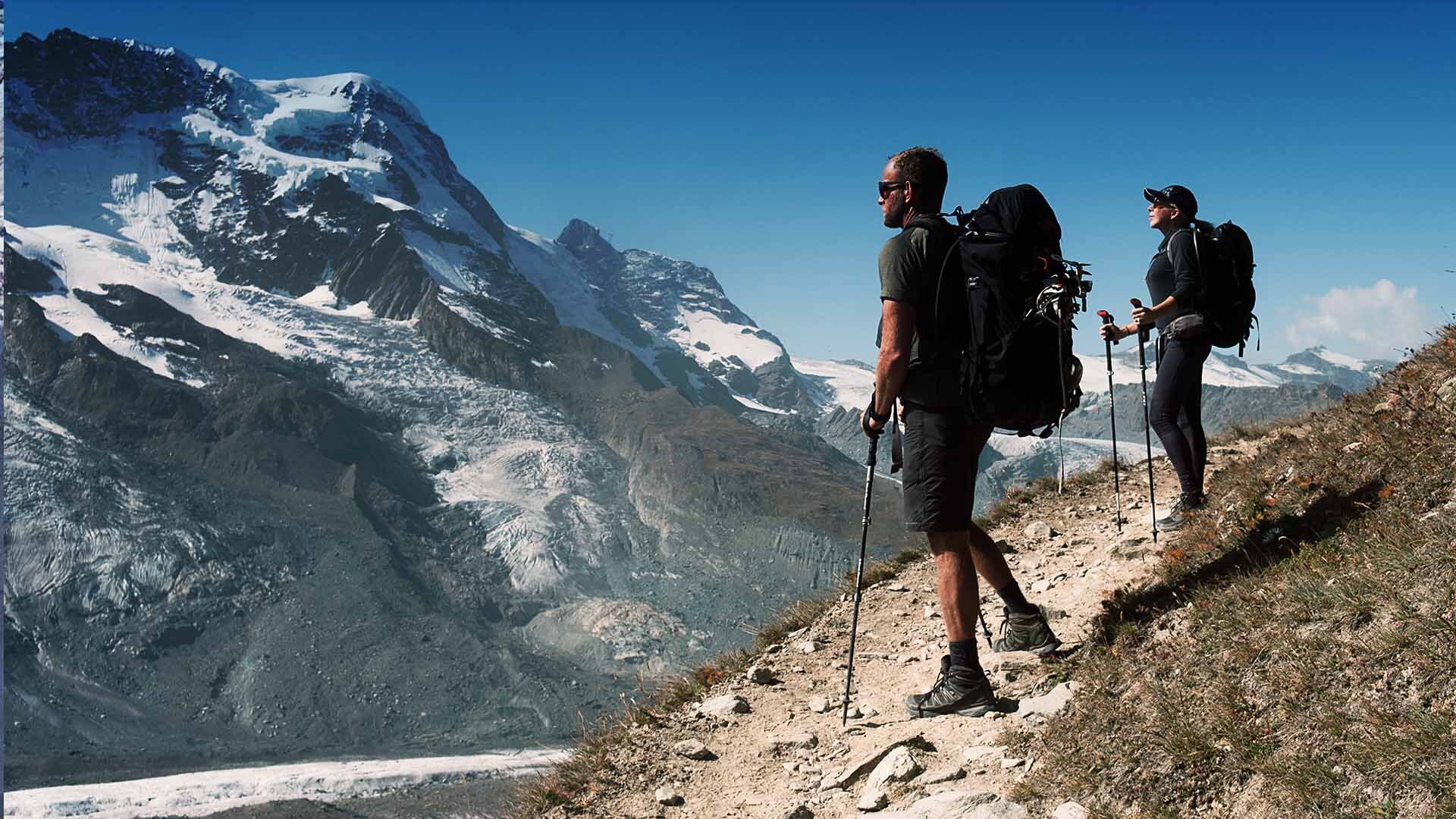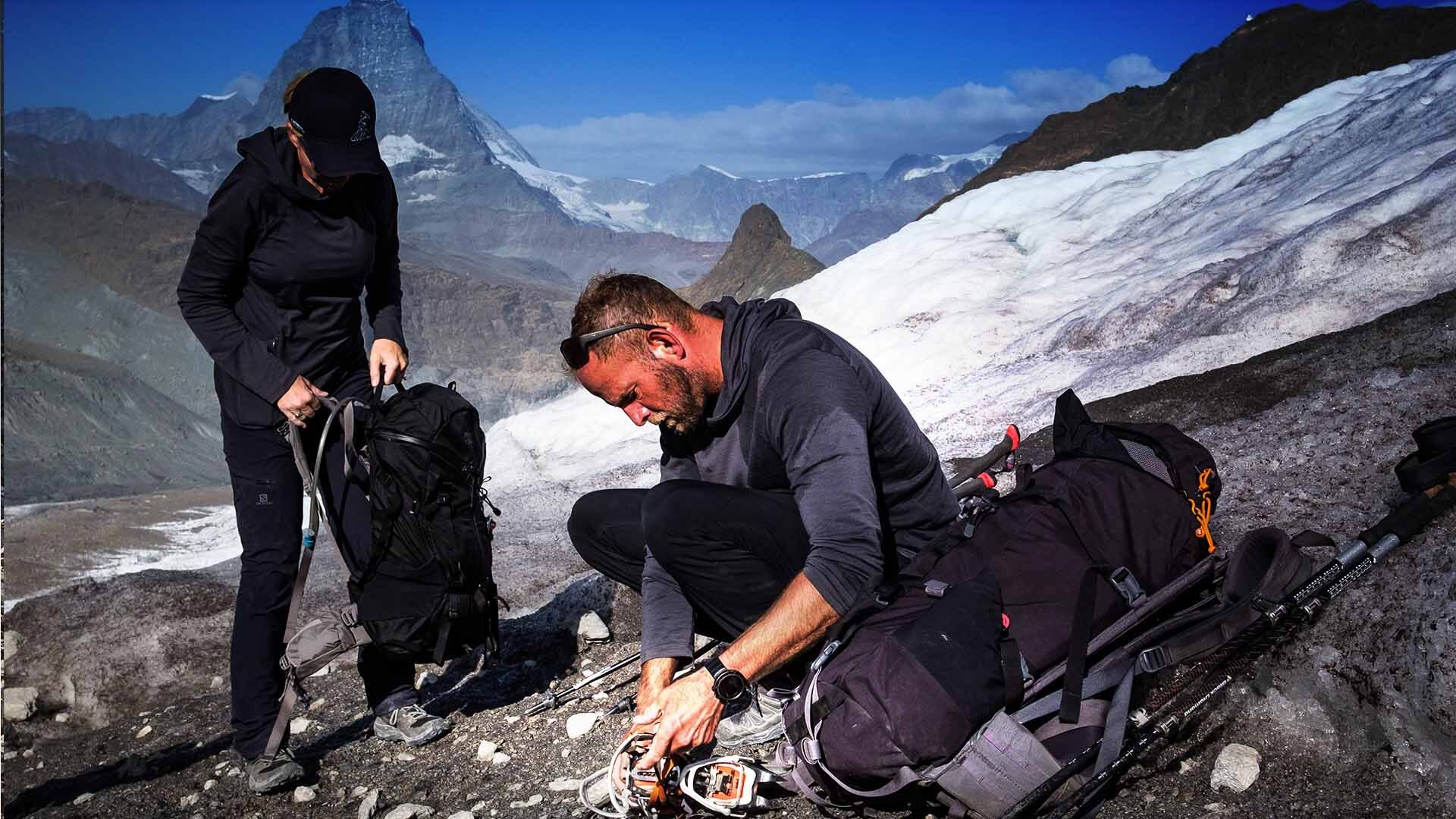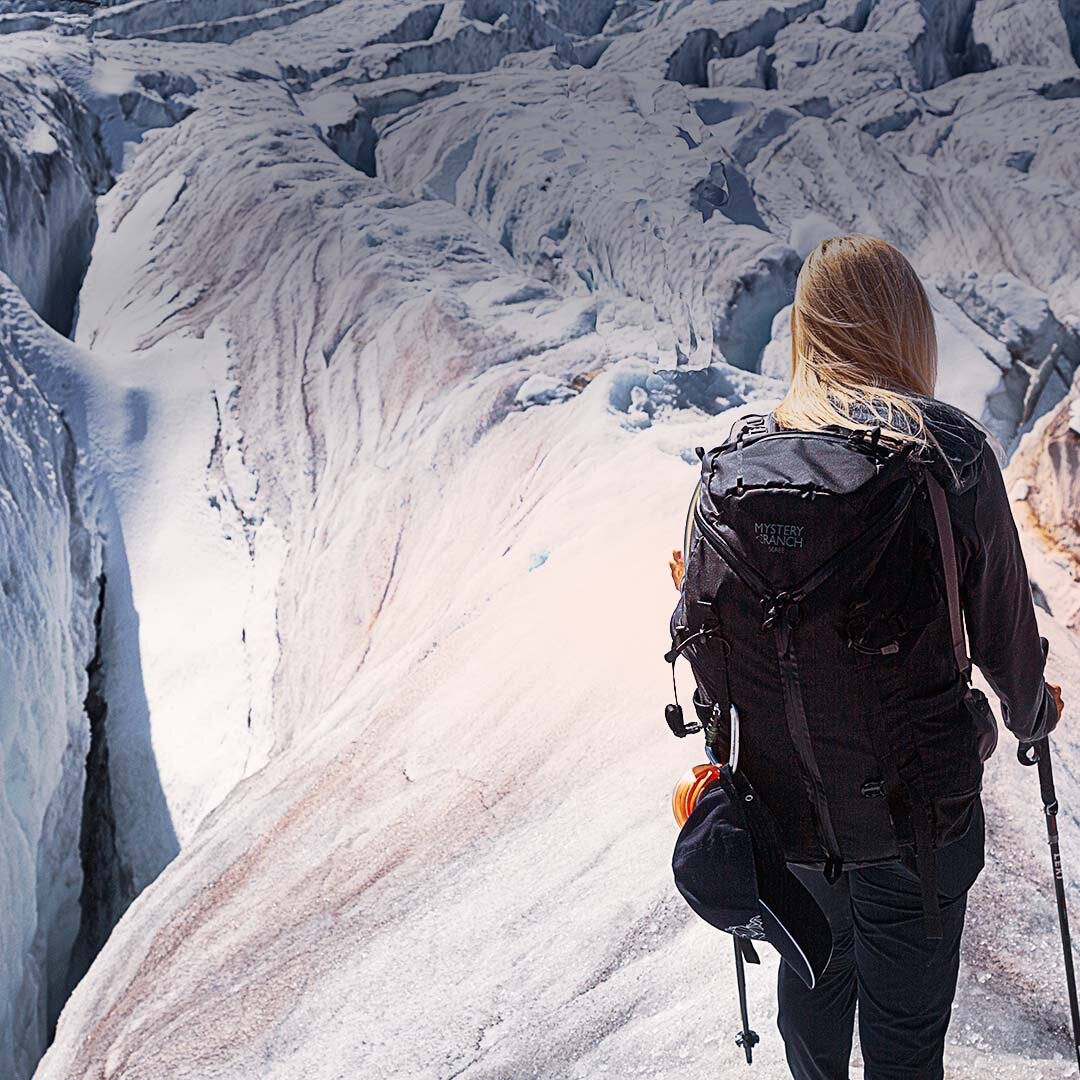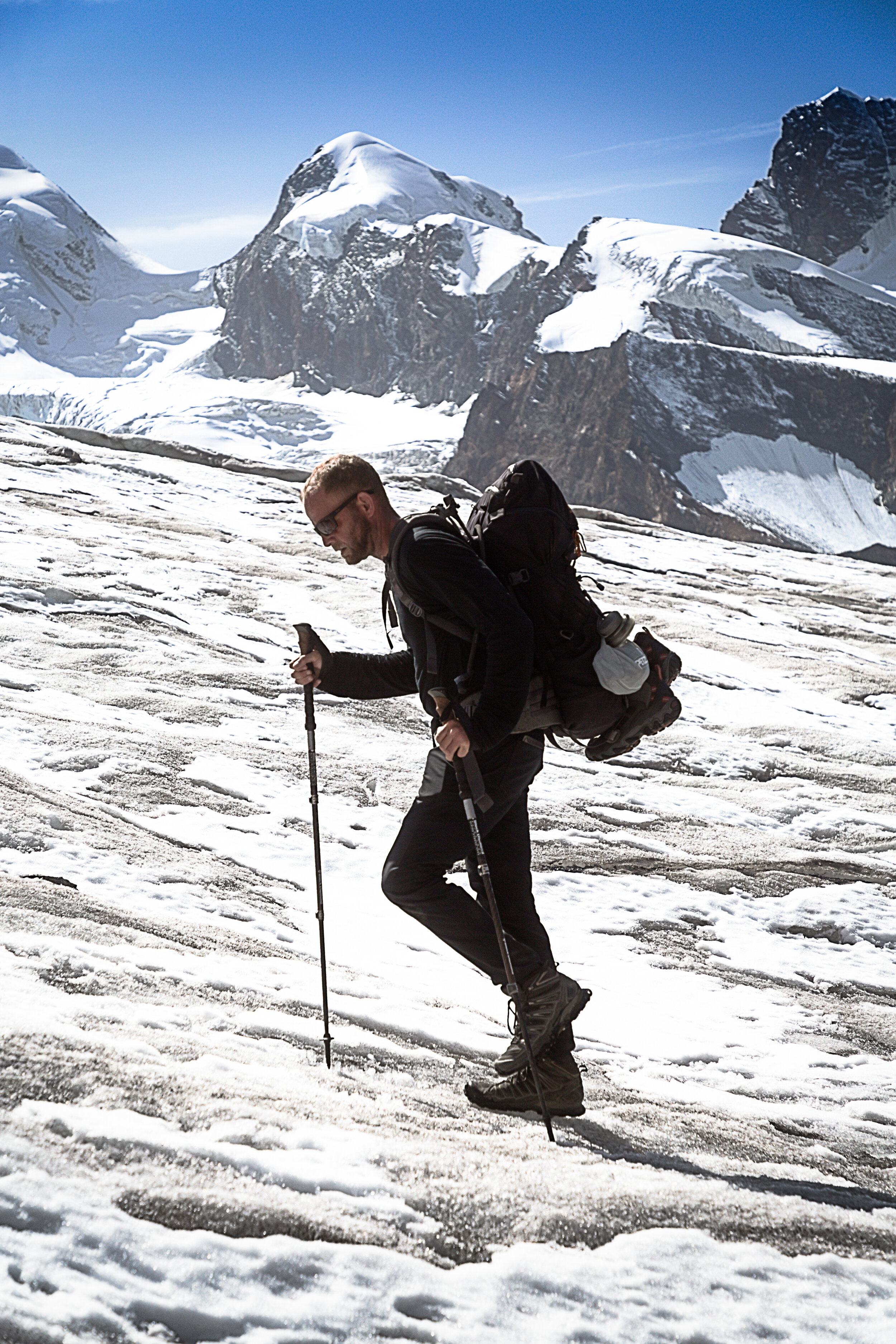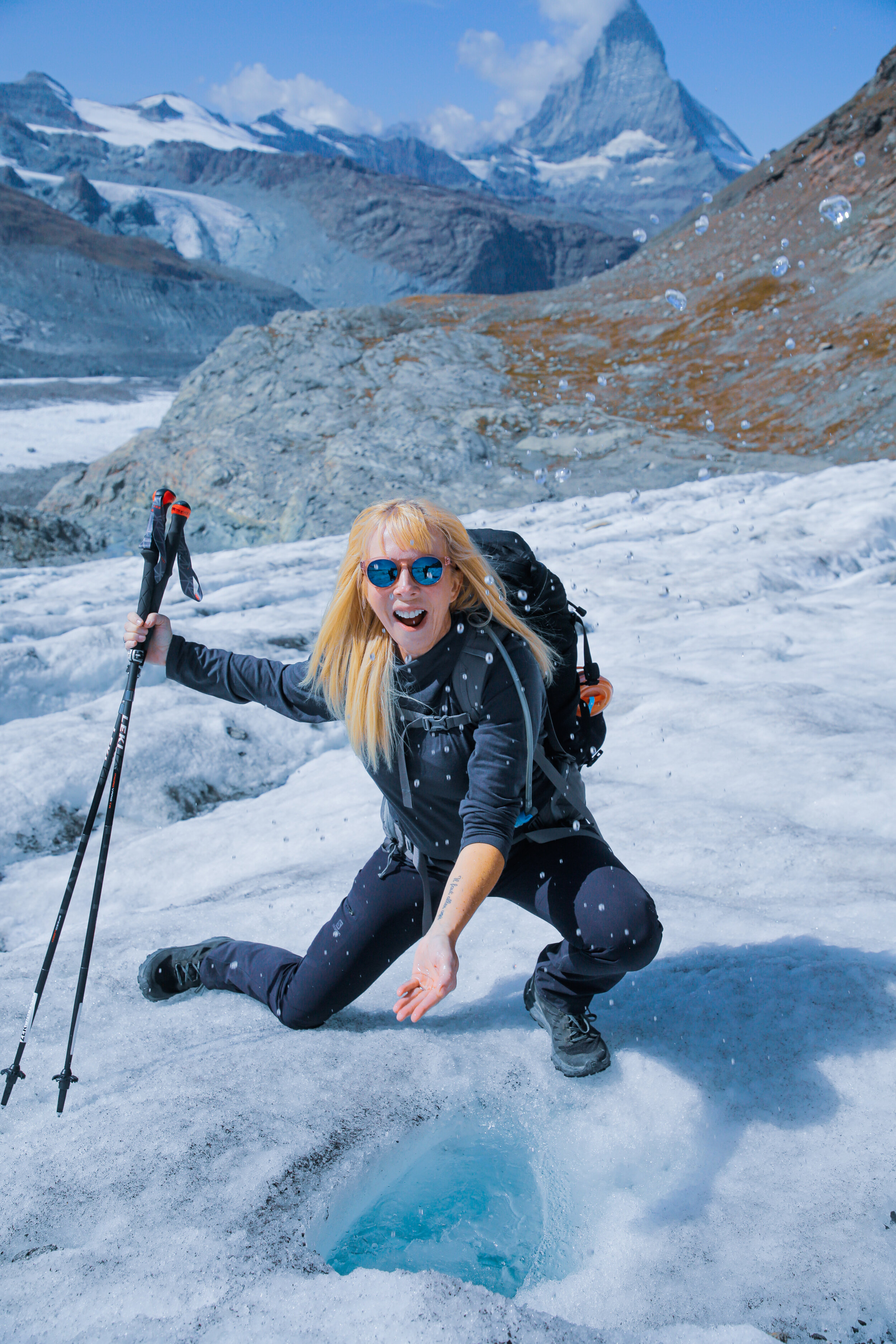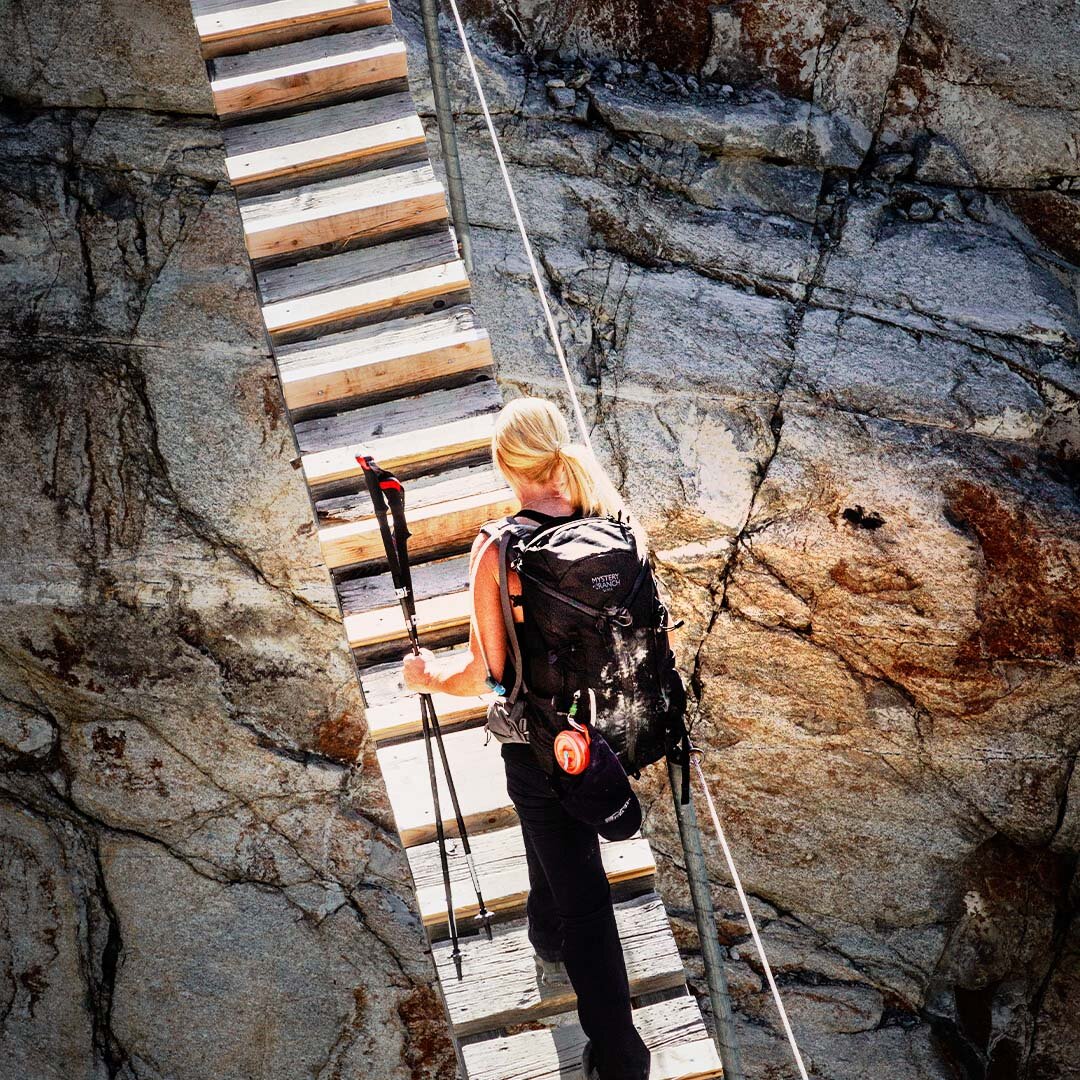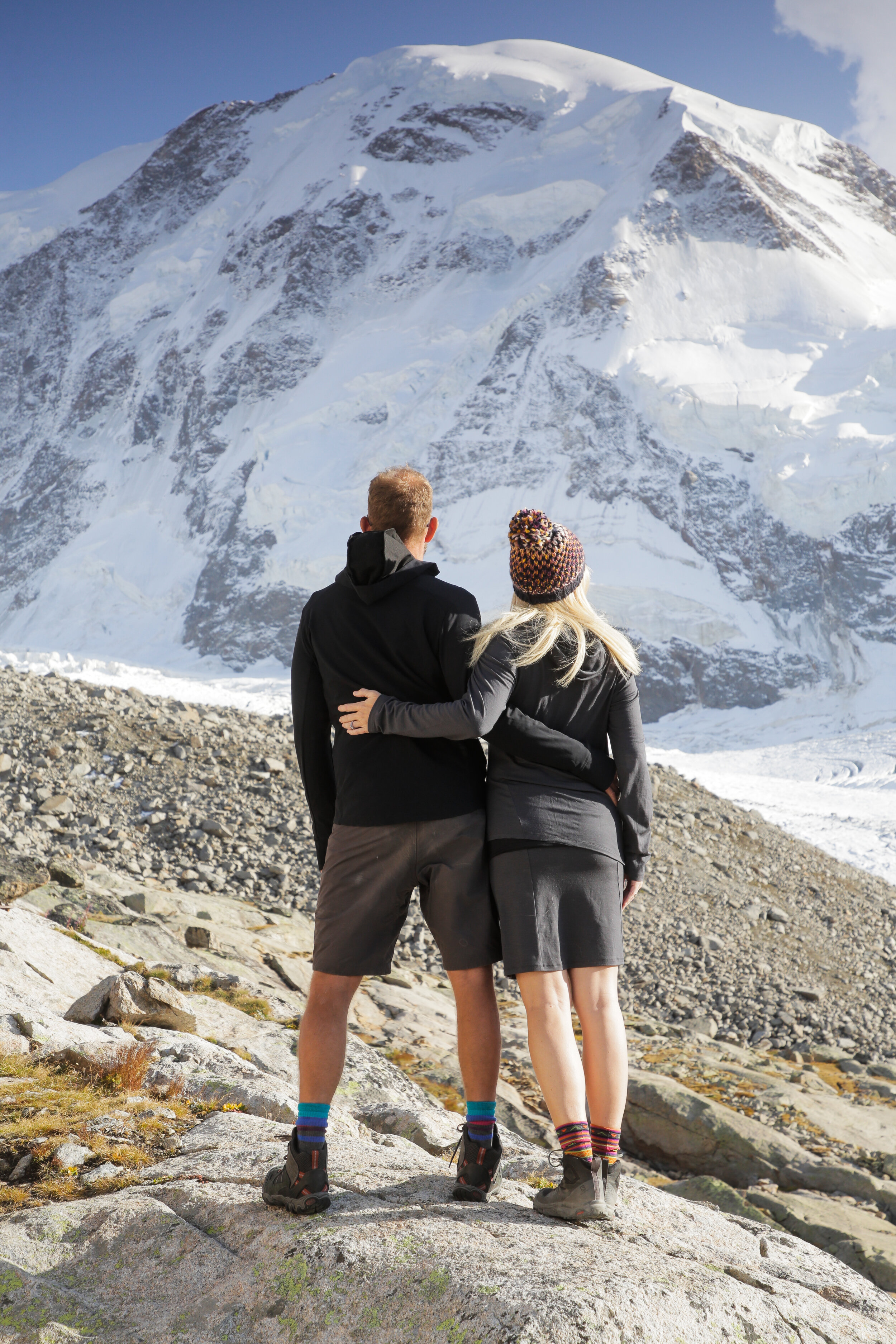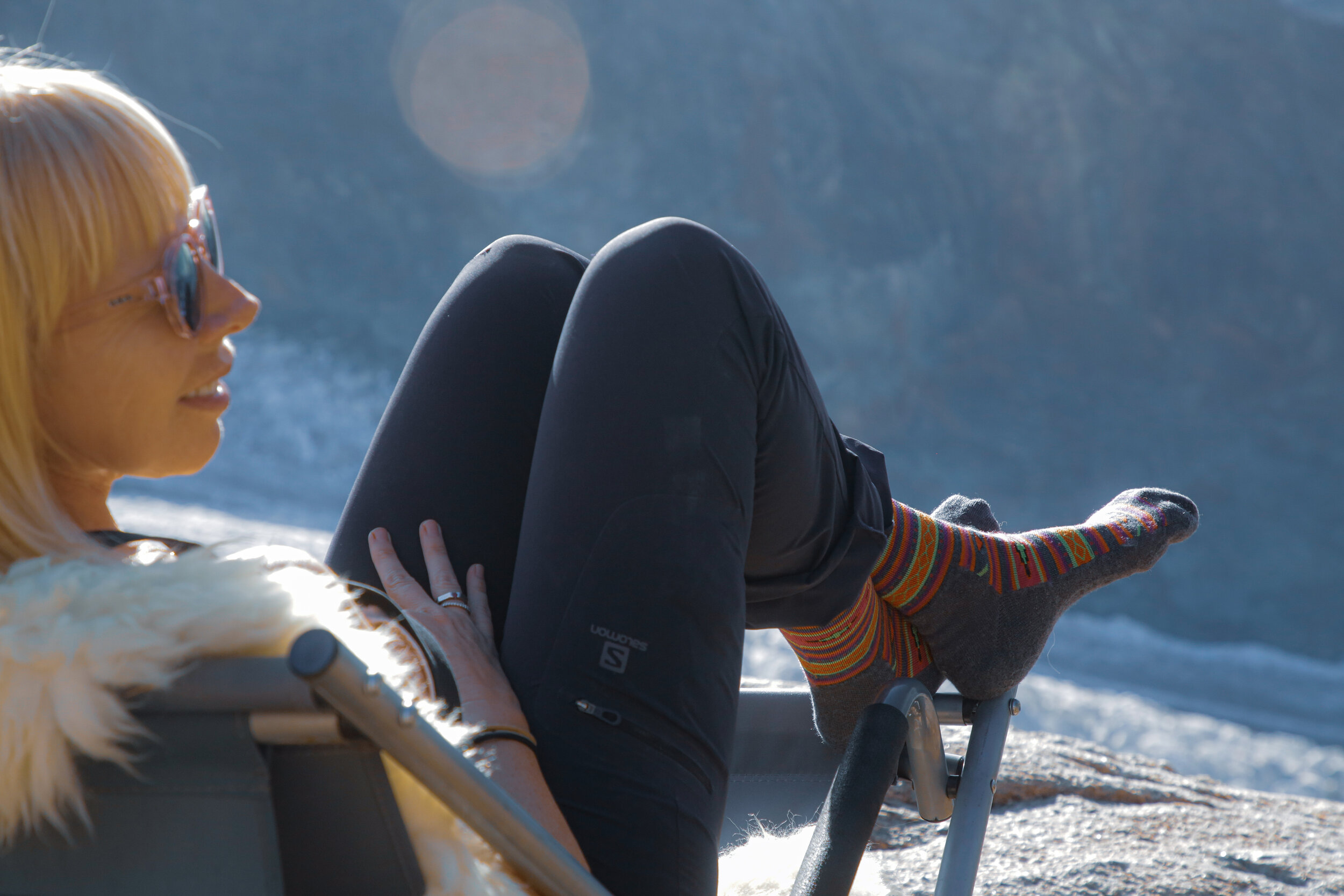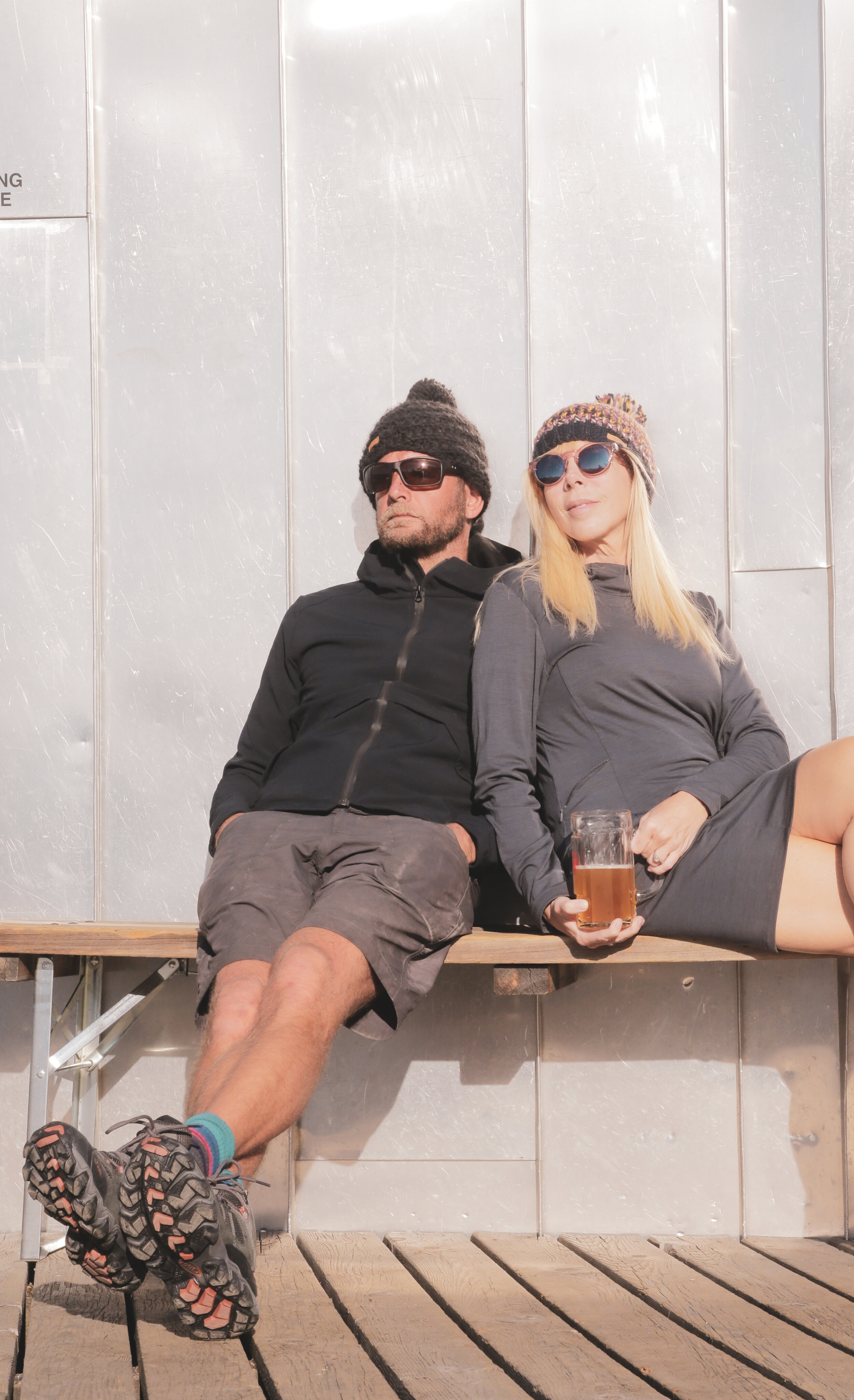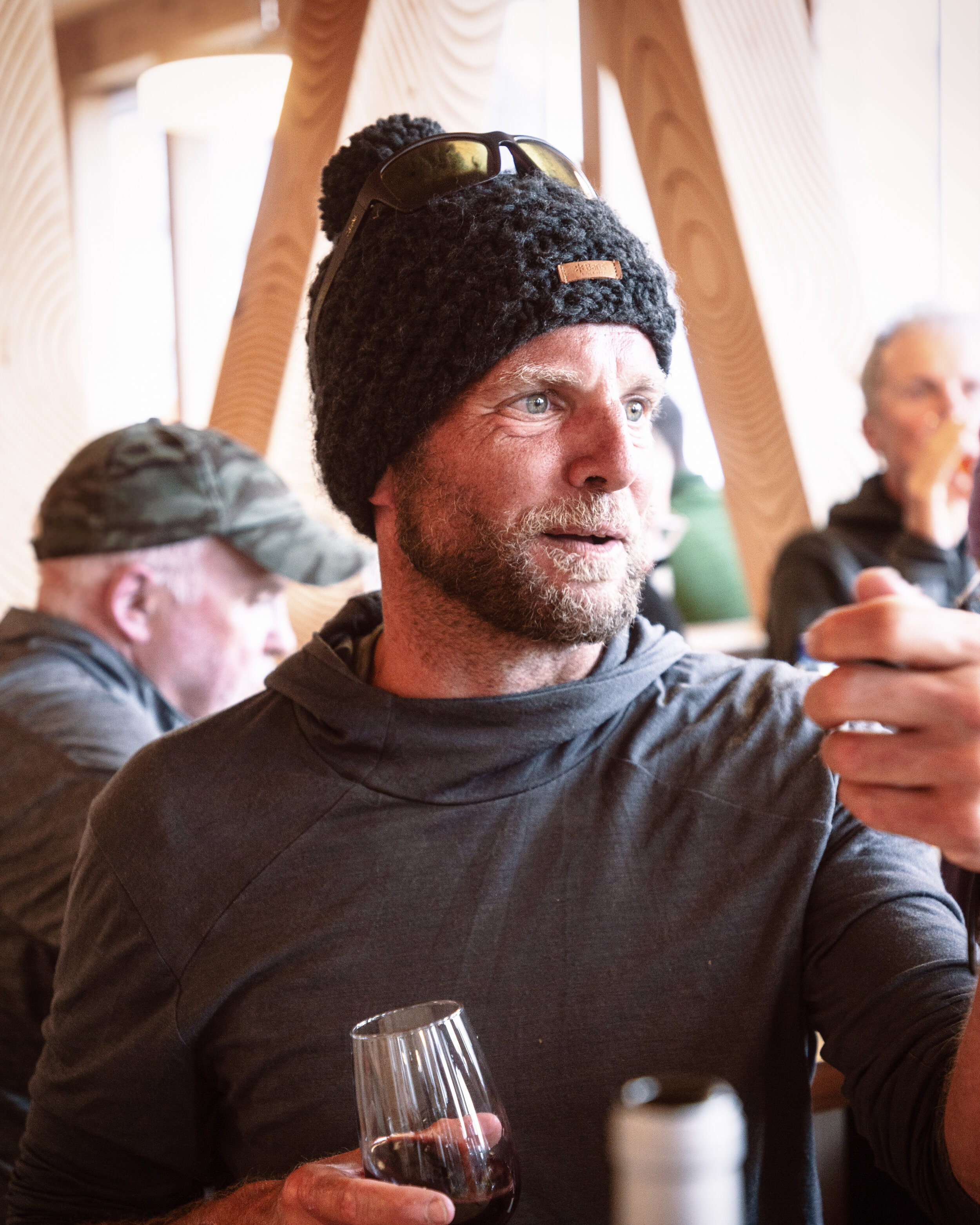TRAVELOG 12: TREK TO THE MONTE ROSA HUTTE, ZERMATT SWITZERLAND
Content and images from this 2019 adventure provided by Suzann Stone and Alexander Escobar
No matter where you look, it appears. The Matterhorn seems to watch over you like a protective lover, shining its light and admiration upon you. It changes colors throughout the day based on the light and when you compare all your images, they read like Monet’s light study of the Rouen Cathedral.
My first vision of it came to me after completing the Europaweg high altitude traverse from Grachen to Zermatt, considered to be one of the most beautiful and challenging 2-day treks in the Alps. With my Mystery Ranch Terraframe 3-Zip 50 feeling like an old friend I’d known for years, we set our sights on ascending the Gorner glacier to the famed Monte Rosa Hutte.
Looking more like a Bond villain’s evil lair than a warm hostel, the Swiss refer to it as the “Rock Crystal”. The Hutte is a marvel of Swiss architecture and engineering. Sitting at 2883m or 9458ft above the glacier, the ambivalence between a sense of security and being exposed defines the building’s unique structure. Situated on a tongue of granite glacier scree and directly below the Monte Rosa Massif. It is also used as a jumping-off point for summiting both the Massif and the border glacier leading into Italy.
Established in 1895 as a one-room shelter hosting 25 trekkers and redesigned in 2009 by architect Andrea Deplazes and students at ETH Zurich, the Monte Rosa Hut is an experiment in self-sufficiency and minimal environmental impact. Given the sensitive nature of the surrounding alpine environment, the hutte was pre-constructed offsite and ferried in via Helicopter. This required over 3000 trips and a team of 35 workers. Operated today by the Swiss Alpine Club the current Hutte has 120 beds, a modern wooden dining area, bar and an outdoor deck with tables and reclining chairs that provide the most pristine views of the Swiss Alps most iconic 4000-meter peaks: the Breithorn and mighty Matterhorn.
As with all things Alpine, our ascent began early morning after linking up with our mountain guide Christian from Zermatters. While the first segment of the trek is a straightforward descent from Rotenboden we were guided along the extended lateral moraine on an easily accessible hiking trail. At the next signpost, our path started the climb to the Gorner Glacier. With the cool wind at our back, and river water flowing underneath the ice, we clung to steep edges with our crampons. At one point, my wife, Suzann stepped onto a piece of thin ice and almost fell to her waist into the icy water. This is not a trek for beginners without proper gear or unguided hikers. Our Carson Merino Hoodie was the perfect layer for the entire trek.
After the glacier, the Panorama Trail took us bouldering over three moraines with several ladders and a narrow suspension bridge up to the Monte Rosa Hutte. We arrived three hours before sunset and languished in the views and our accomplishment over a few steins of Zermatt bier. I popped up the drone at sunset and captured some of the best footage I’ve filmed to date. As the sun began to sink like a hot stone, we moved inside and traded our Oboz hiking boots for the hutte’s indoor clogs. We stowed our gear and prepared for a well-deserved meal. Sitting at communal tables with 80 fellow trekkers, we devoured the hearty plate of Rösti served with bratwurst and onion gravy. We drank several bottles of Swiss Pinot Noir and discussed the philosophical pull of the mountains and living a simple life in nature with Christian. The wine, altitude and our 5:30am wake up the next morning made it easy to fall asleep as our heads hit the pillow in our 10 person bunk. We floated off to sleep peacefully dreaming about the next morning’s descent.

